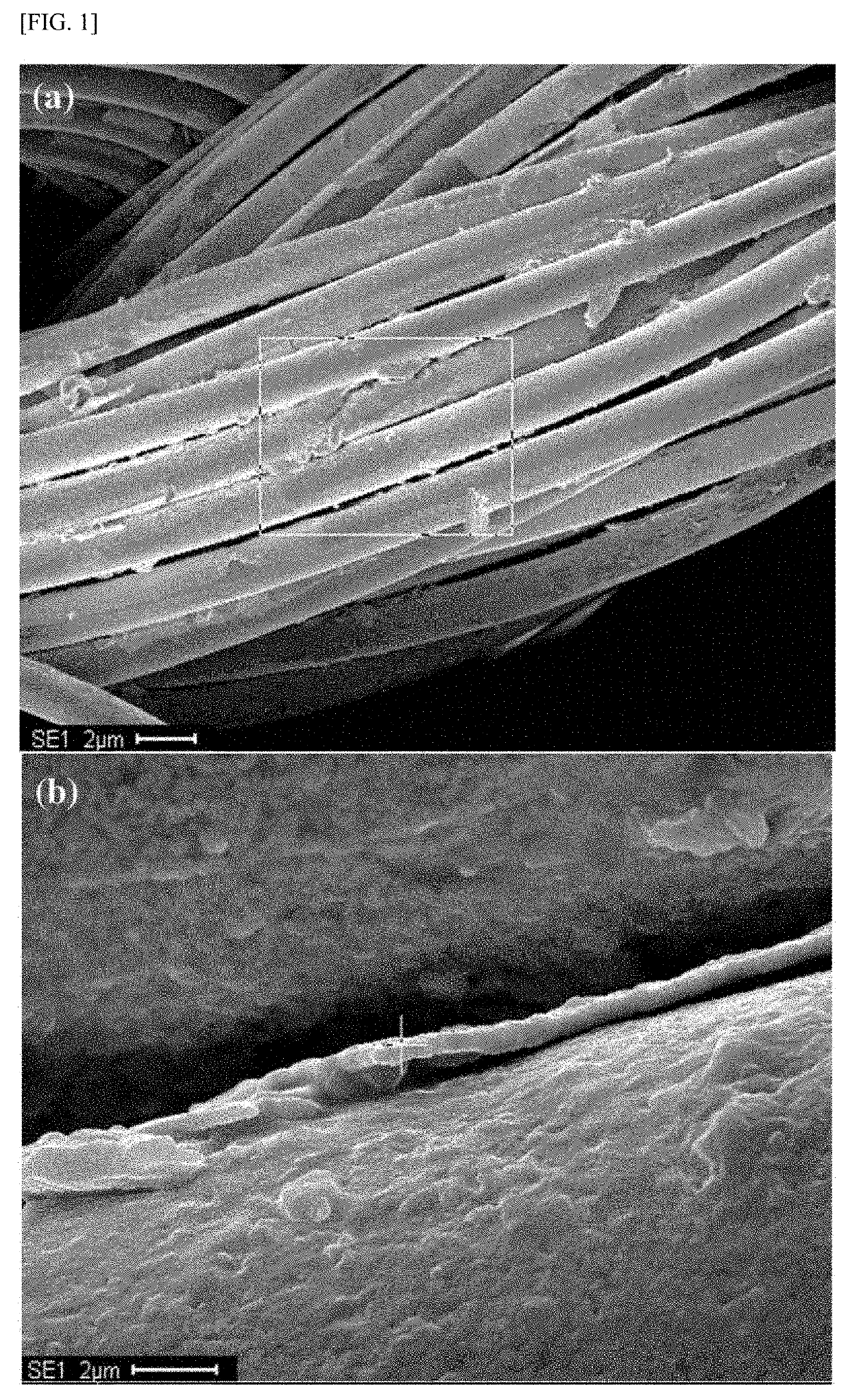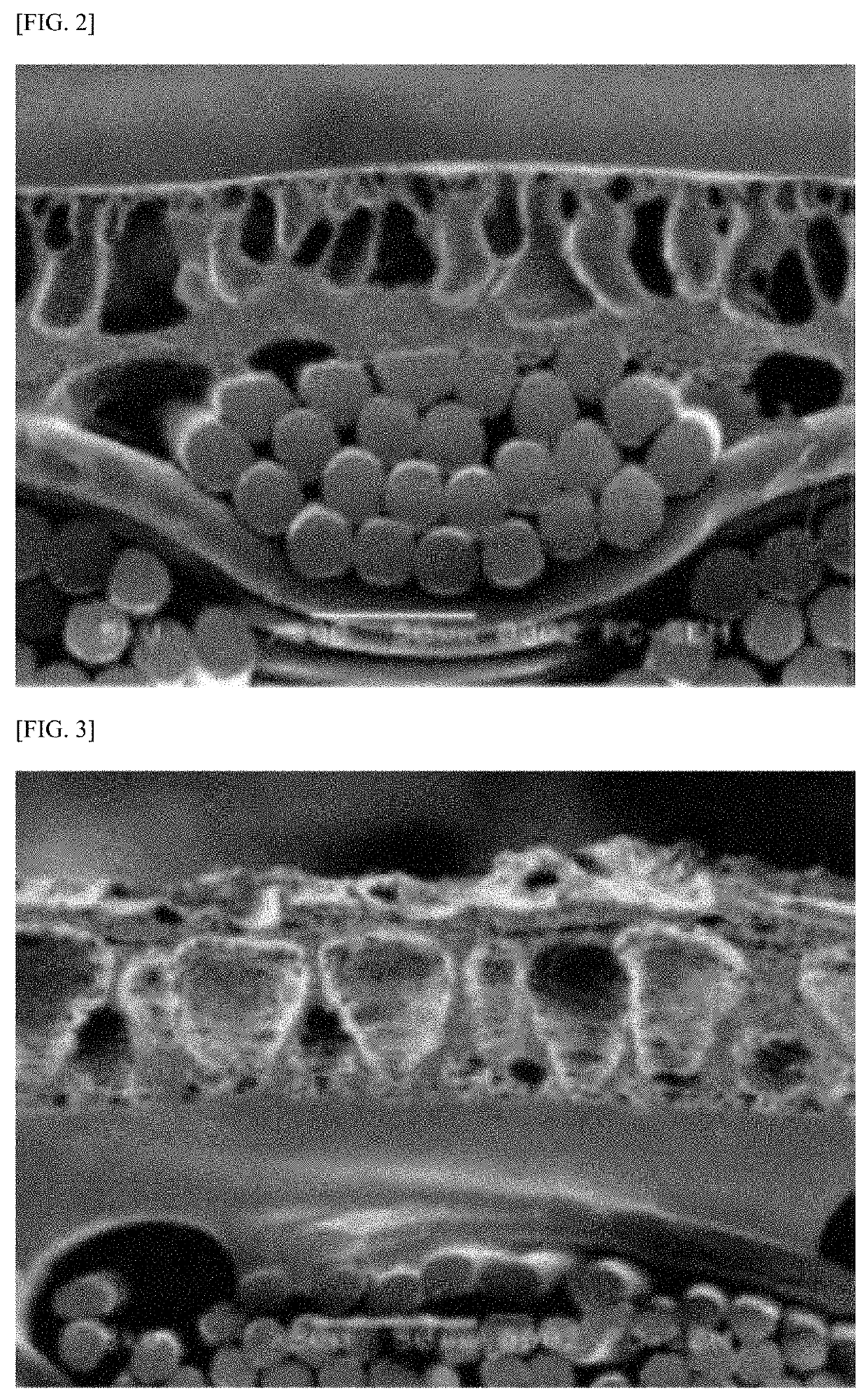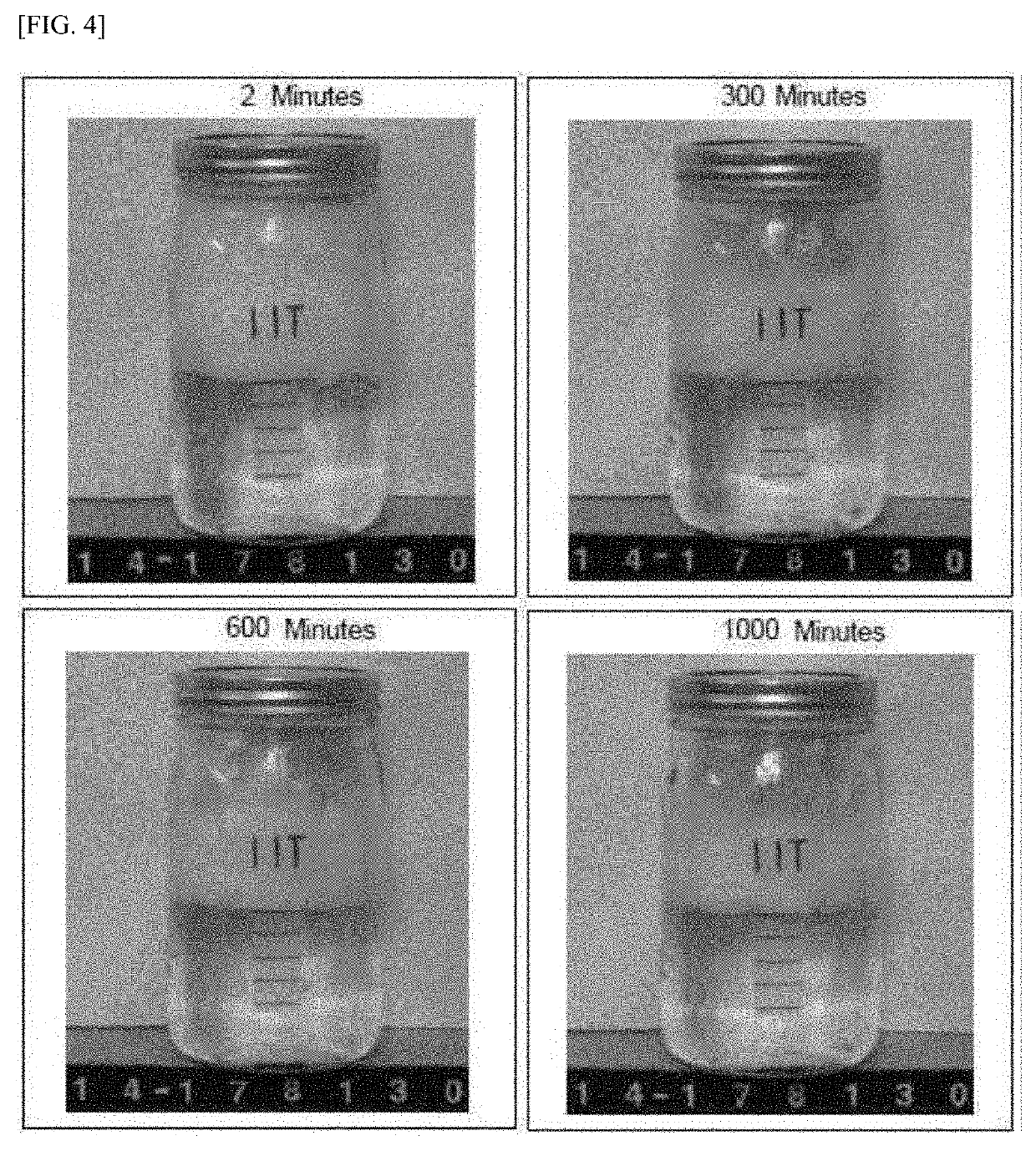Water-repellent fabric and water-repellent down product comprising the same
a technology of water-repellent fabric and down, which is applied in the direction of liquid repellent fibres, protective garments, coatings, etc., can solve the problems of affecting the effect of water repellency, down clothing not only easily loses heat retention, and requires a long time to dry, so as to achieve excellent water repellency and excellent heat retention. , the effect of restoring water repellency
- Summary
- Abstract
- Description
- Claims
- Application Information
AI Technical Summary
Benefits of technology
Problems solved by technology
Method used
Image
Examples
example 1
ellency Evaluation of Water-Repellent Fabric
[0088]A water-repellent emulsion was prepared by introducing a 1:1 mixture (w / w) of water and ethanol into an immersion bath and then mixing it with a CO-type non-fluorinated water repellent (XF-5001 manufactured by Daikin Industries, Ltd.) and a blocked polyisocyanate-based crosslinking agent (TDX-7 manufactured by Daikin Industries, Ltd.) which were introduced in an amount of 7 wt % and 1 wt %, respectively, based on the total amount of the water and the ethanol.
[0089]A polyester fabric (FDX390 manufactured by Onechang Material Co. Ltd.) was introduced into the prepared water-repellent emulsion at a conveying speed of 60 m / min by a roll-to-roll process such that the fabric was completely immersed in the emulsion. After being removed from the emulsion, the fabric was dried and cured at 170° C.
[0090]A water-repellent fabric prepared as such was tested in accordance with KS K 0590:2008 (Spray test) to determine the water repellency level th...
example 2
ce Evaluation of Moisture-Permeable Coating
[0094]A moisture-permeable coating liquid having a viscosity of about 20,000 cps at 25° C. was prepared by mixing a dry porous polyurethane coating (V-coat 2000sp manufactured by Duek-keum. Co. Ltd.) with a methyl ethyl ketone solvent to a solid content of about 30%.
[0095]The moisture-permeable coating liquid was applied onto a polyester fabric conveyed by a roll-to-roll process to a thickness of 40 μm, and then the fabric was passed, at a conveying speed of 15 m / min, through a high-temperature region of a drying chamber where the temperature was gradually increased from 100° C. to 150° C.
[0096]When the moisture-permeable coating was completed, the resulting fabric was tested in accordance with JIS L 1096:2010, 8.26.1 to determine the air permeability thereof. The determined air permeability was 4.0 CFM.
[0097]The same fabric was tested in accordance with JIS L 1099:2012 (Calcium chloride test) to determine the water vapor permeability there...
example 3
Permeability Evaluation of Water-Repellent and Moisture-Permeable Fabric
[0100]A water-repellent and moisture-permeable fabric was prepared by applying, to a fabric which is a water-repellent fabric prepared in Example 1, a moisture-permeable coating by the method described in Example 2.
[0101]The resulting water-repellent and moisture-permeable fabric was tested in accordance with JIS L 1099:2012 (Calcium chloride test) to determine the water vapor permeability thereof. The determined water vapor permeability was very high: 9,442 g / m2 / 24 h.
[0102]The water vapor permeability of the same fabric was also determined in accordance with JIS L 1099:2012, Method B-1 (Potassium acetate test). The determined water vapor permeability was 10,067 g / m2 / 24 h.
[0103]The above-described results demonstrate outstanding moisture permeability considering the fact that the determined values are at least 2-fold greater than the water vapor permeability of existing laminated fabrics, which is generally abou...
PUM
| Property | Measurement | Unit |
|---|---|---|
| temperature | aaaaa | aaaaa |
| temperature | aaaaa | aaaaa |
| pH | aaaaa | aaaaa |
Abstract
Description
Claims
Application Information
 Login to View More
Login to View More - R&D
- Intellectual Property
- Life Sciences
- Materials
- Tech Scout
- Unparalleled Data Quality
- Higher Quality Content
- 60% Fewer Hallucinations
Browse by: Latest US Patents, China's latest patents, Technical Efficacy Thesaurus, Application Domain, Technology Topic, Popular Technical Reports.
© 2025 PatSnap. All rights reserved.Legal|Privacy policy|Modern Slavery Act Transparency Statement|Sitemap|About US| Contact US: help@patsnap.com



